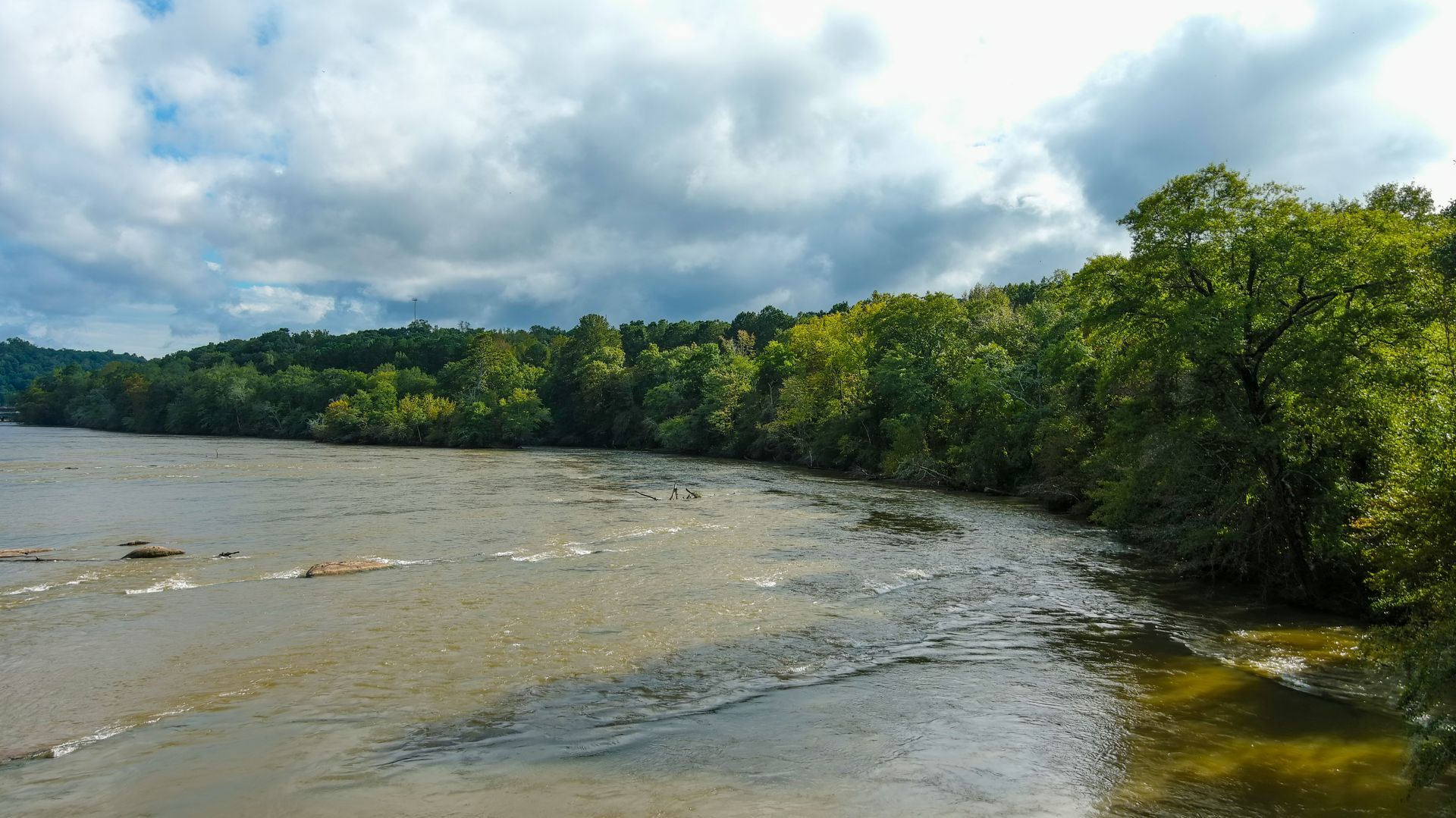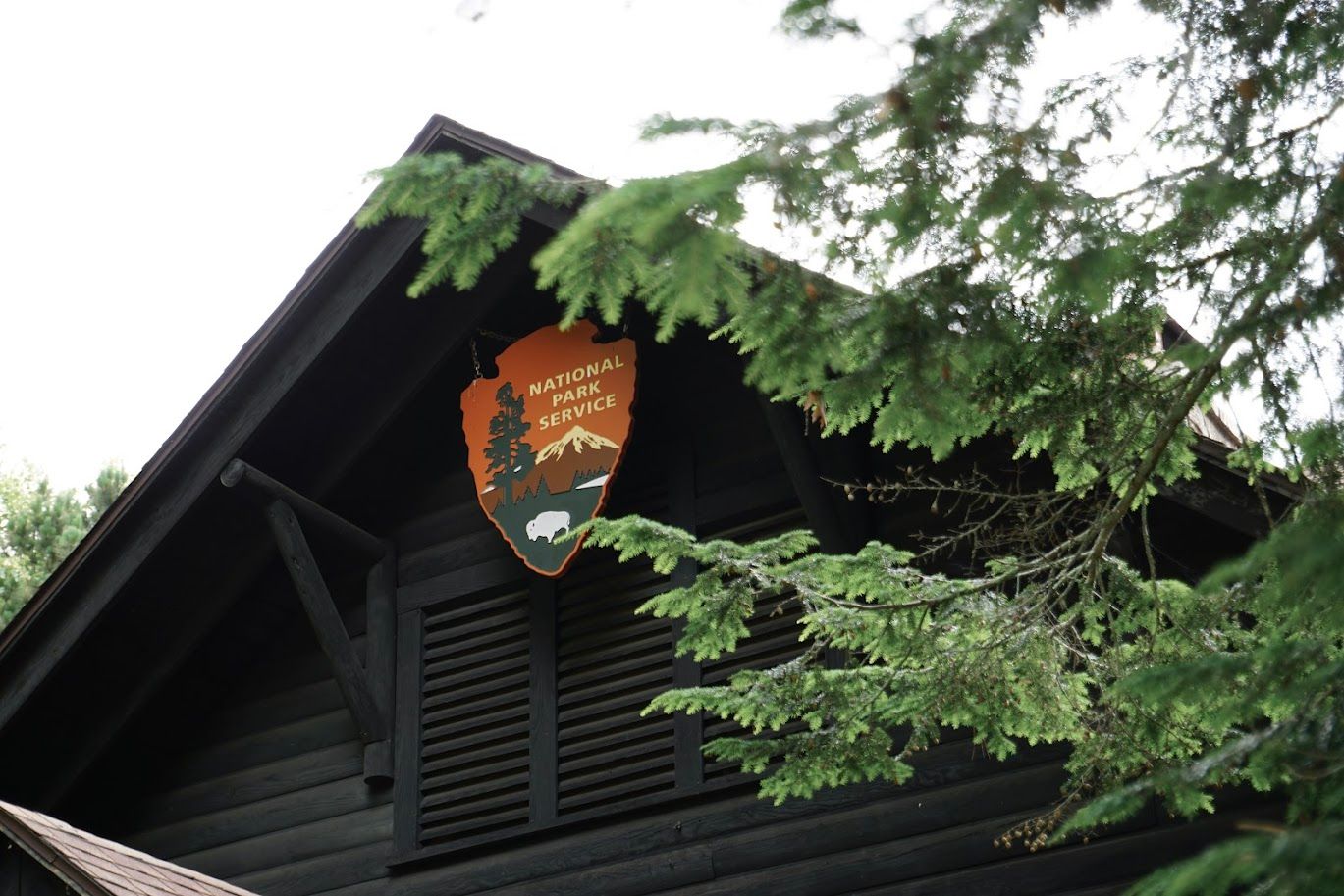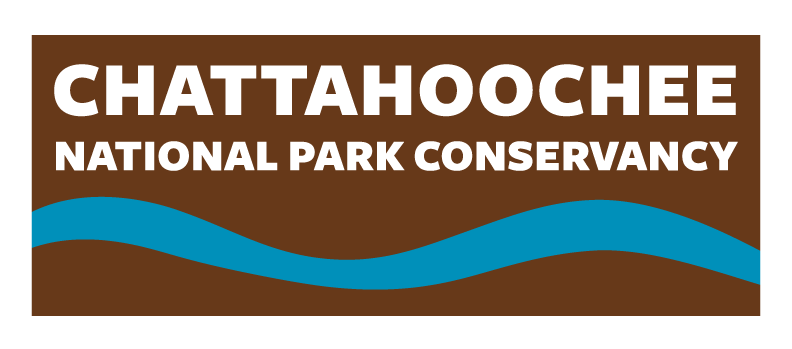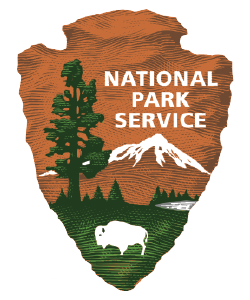Fishing in Chattahoochee River National Recreation Area
With diverse fishing spots, abundant fish species, and convenient amenities such as fishing piers and boat ramps, the CRNRA caters to anglers of all levels seeking a memorable fishing experience along the Chattahoochee.Anglers 16 and older in CRNRA are required to have a valid Georgia fishing license and trout stamp. Learn about fishing regulations and purchase a license at the Georgia Department of Natural Resources website.
Anyone wading in the river between Buford Dam and the Highway 20 Bridge or between Morgan Falls Dam and the Morgan Falls Boat Ramp is required to wear a PFD at all times. It is highly recommended to wear your PFD even on the other stretches of river where it is not required. Exercise caution before swimming across the river, as the water is cold and the current may be swift. There are multiple deaths each year from people attempting to swim across the river most of whom were not wearing a properly fitting PFD. Always practice safety first, and check the flow before you go.

In the Park - Fishing Hot Spots
Would any devoted angler ever give up her best fishing spots? In general, fishers are very generous with advice. Additionally, the tailwater of the Chattahoochee below Buford Dam is so large, and the CRNRA offers so many access points, that there is no shortage of good opportunities to catch fish and thus no need to be secretive.
During the summer, trout like the coldest water they can find. Bowmans Island is an excellent choice. At lower water, most of the river is accessible to wading, and it also offers good opportunities to floatfish. Access is best from the Lower Pool West boat ramp just above Haw Creek. Try to stay on the gravel, not the slippery rocks, and be aware of any potential water release from the dam. The Jones Bridge unit is also a popular part of the river for fly fishing along the shoals.
Another excellent time to enjoy lots of fish and relative solitude on the lowest portions of the tailwater is the Delayed Harvest season which runs from November 1 to May 14. During that time, the Georgia DNR releases 50,000 trout into the river from Sope Creek in the Cochran Shoals unit downstream to the US 41 bridge in the Paces Mill unit. No bait fishing is allowed, and no multi-hook lures. All fishing is catch and release. As a result, there are a lot of fish in this area during the Delayed Harvest, providing excellent fishing.
Always remember that the cold water that trout love comes out of the dam in massive releases of water that can be very, very dangerous, overwhelming anyone downstream. Don’t ever get into the upper reaches of the “lower” Chattahoochee without checking the release schedule at (770) 945-1466 and understanding how long the released water takes to go downstream, and always wear a PFD above the highway 20 bridge. This is fantastic trout water, but it can be fatal to humans who don’t take the time to understand when releases are coming or to take precautions.
Fishing for Brown & Rainbow Trout
The “Lower” Chattahoochee, below Lake Lanier, holds a lot of trout. Although trout are not indigenous, the river is now a prime habitat with the mighty Buford Dam sitting 160 feet above the riverbed, allowing extremely cold, oxygen-rich water at the bottom of Lake Lanier to flow out from its base year-round.
Three species of well-oxygenated trout have populated the lower Chattahoochee. The first species was the Brook Trout (actually a char, but why quibble). The Brook Trout was stressed by nineteenth century warming of the (un-dammed) river, then pushed out of the river altogether when two more non-native species were introduced. The first of those species is the beautiful and adaptable Rainbow Trout.
Voracious and varied eaters, these flashy fish are marked by their red-pink stripe down their sides. Rainbow Trout thrive both in the ultra-cold water near the dam and in the warmer, slower moving water much farther downstream past CRNRA’s Paces Mill unit. The other non-native species is the Brown Trout, which hails from Europe. It prefers the colder, faster water in the upper reaches of the tailwater and will lurk in eddies and pools. The great news is that they are now self-sustaining in that region. Catching a wild, brown trout on a surface fly is a real treat!
For more information on local aquatic species fish found in the Chattahoochee, check out the interpretive panel funded by CNPC partner the Upper Chattahoochee Chapter of Trout Unlimited on the new overlook at the Jones Bridge unit.
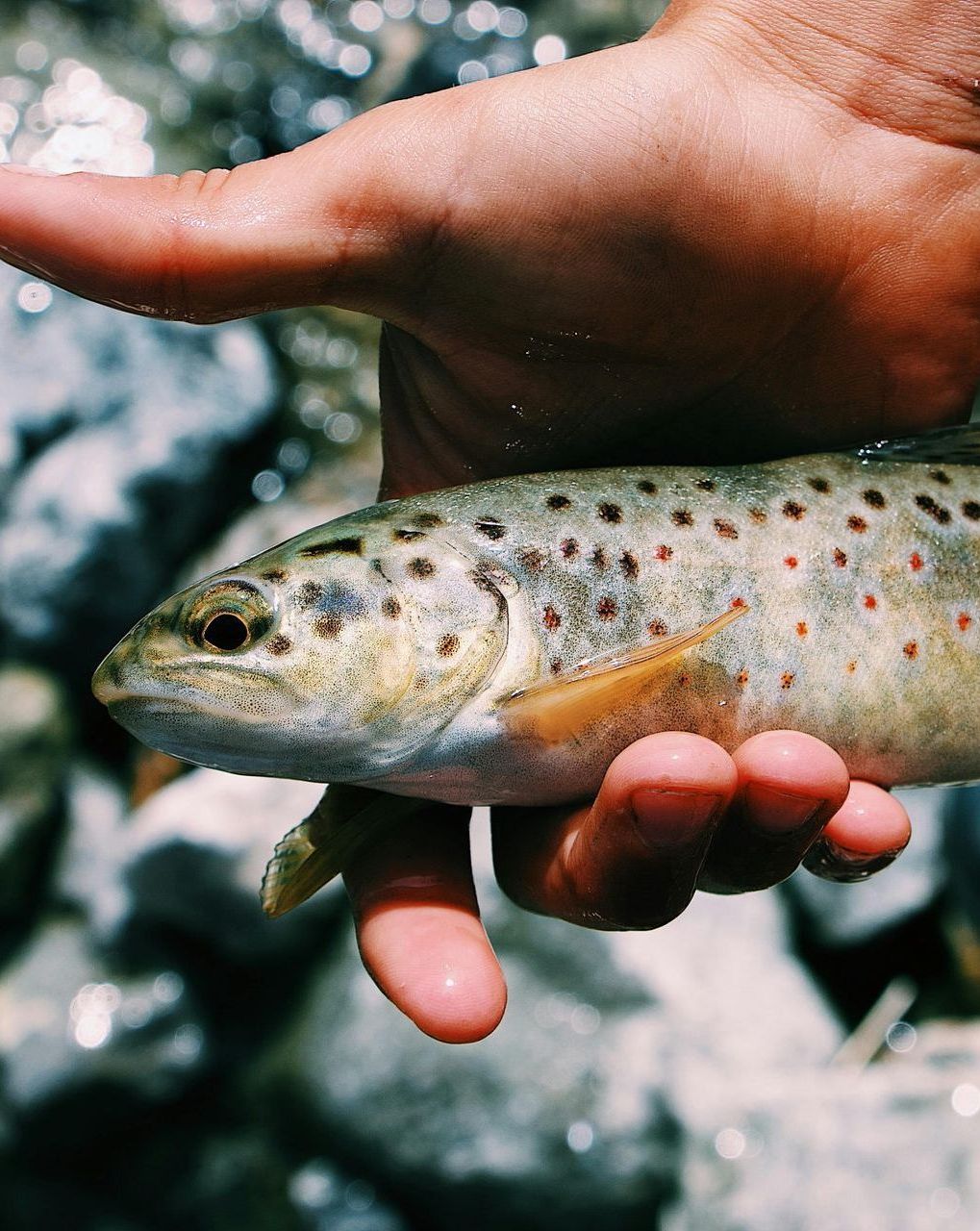

Fly Fishing Basics
There are a lot of ways to catch fish, and they are all fun. Most of us are familiar with bait fishing, which uses live or dead bait to attract fish with sight and smell, and spinning, which uses artificial lures that are cast using the weight of the lure. Fly fishing is another traditional way of fishing in which an ultra-light hook covered in feathers or yarn is cast using the weight of a heavy line to carry the tiny, nearly weightless fly out to the waiting fish. This unique delivery mechanism permits a tiny imitation of an insect to float quietly down onto the surface of the river, imitating an aquatic insect landing on the water. It is intended to fool the fish’s sight. When it works, it results in a great fight on light line and a long, very flexible rod. When it doesn’t work, the angler does not reel in but rather simply lifts the line with the rod and casts it to a new spot.
Fly fishermen can be gearheads, but an expensive setup is not necessary. A decent flyrod with reel and line can be bought as a package at any of the big-box outdoors stores or online for a reasonable amount. There are several good fly shops along the Chattahoochee that can help with flies and other gear, such as Alpharetta Outfitters in downtown Alpharetta (bonus: CNPC Members get exclusive discounts on gear, apparel, and guided Chattahoochee fly fishing trips at Alpharetta Outfitters!), The Fish Hawk in Buckhead, and Orvis in Alpharetta and Atlanta. You can start fishing from the shore or wade out in the warm weather. A pair of waders will let you keep fishing into colder weather or closer to the chilly tailwater coming out of Buford Dam.
To get started, you will need a fly rod, reel and line in a 5 or 6 weight (this refers to the weight of the line and the corresponding size of the rod). Check out online tutorials on casting and practice without a fly in a large yard, or better on a calm pond or section of river away from trees. Alternatively, the Atlanta Fly Fishing School offers lessons (and use of their equipment) and is endorsed by Trout Unlimited, a national conservation organization devoted to preserving trout habitat. A local guide, such as Chris Scalley at River Through Atlanta, can take you out on the Chattahoochee to help refine your new skills and make those trout dreams a reality.
Support Your Local National Park
If you enjoy CRNRA, consider supporting the Chattahoochee National Park Conservancy (CNPC). Your donation helps maintain and improve our beautiful trails and river, ensuring they remain a top destination and escape for metro Atlanta. Every contribution makes a difference in preserving this natural treasure for future generations.
Related Posts
